Organising a linen cupboard - the must-read step by step guide
Store your linens cleverly and they’ll be to hand, crease-free and smelling fresh right when you need them

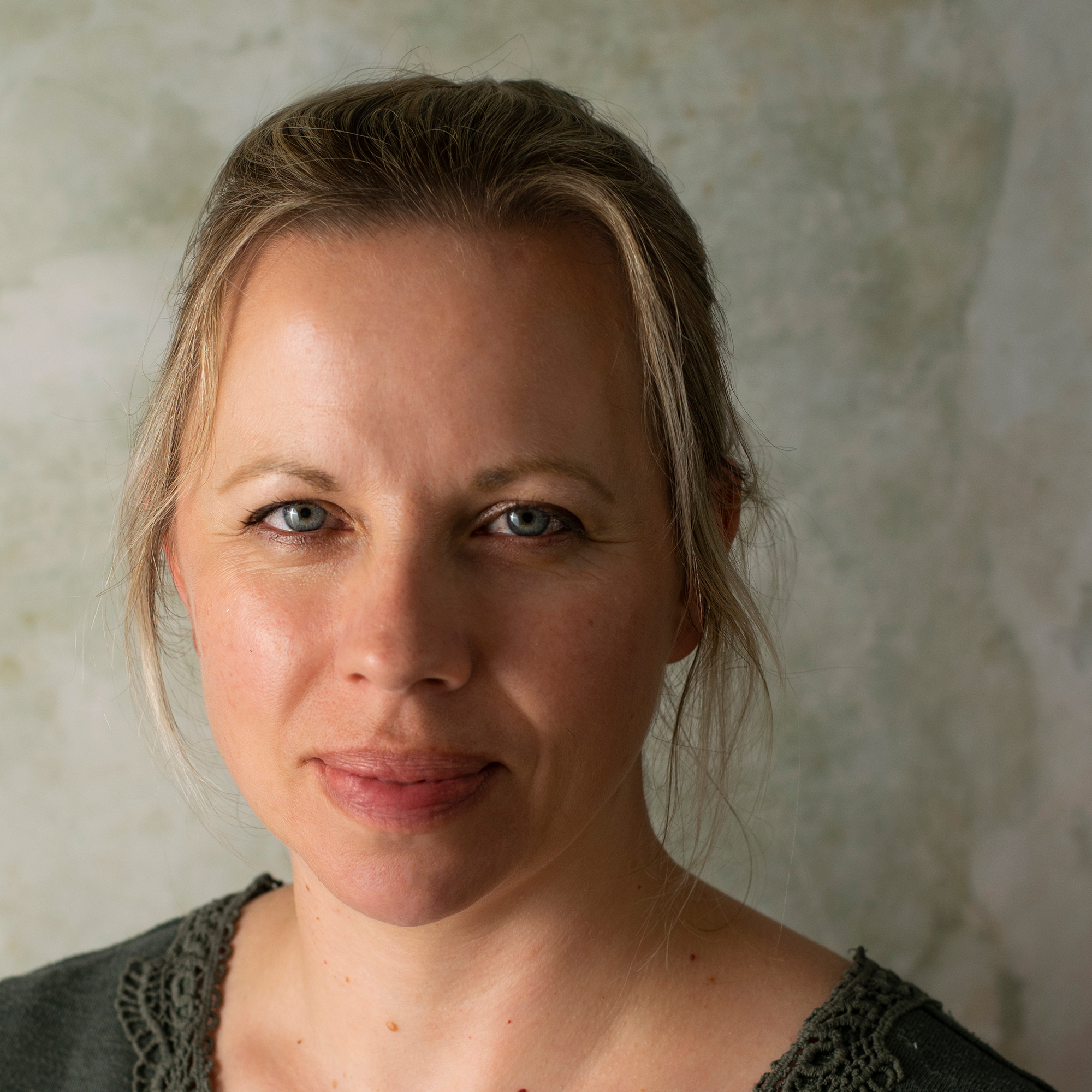
We’ve all been there – turning out an entire cupboard, just to find that missing pillowcase or hand towel. But with a few simple steps, and some new techniques, you can start organising a linen cupboard of your dreams – making putting things away, and locating them again, less of a chore.
After all, storage areas can quickly become a shambles when things are thrown in haphazardly, or items are pulled out in a hurry, leaving us in need of some bathroom storage ideas.
Ideally you need to find an area you can dedicate solely to linen, whether that’s a purpose-made utility area, a couple of shelves, an under bed drawer, or a repurposed cupboard.
‘An antique cupboard could make for the perfect linen cupboard solution,' suggests Joanna Baumard, Co-founder of Purlfrost. 'To hide away your linens, try a window film in a delicate design such as lace. The intricate detailing lends itself nicely to the setting and keeps clutter out of sight.'
Once you’ve picked your chosen area, it’s time to get started on organising a linen cupboard…
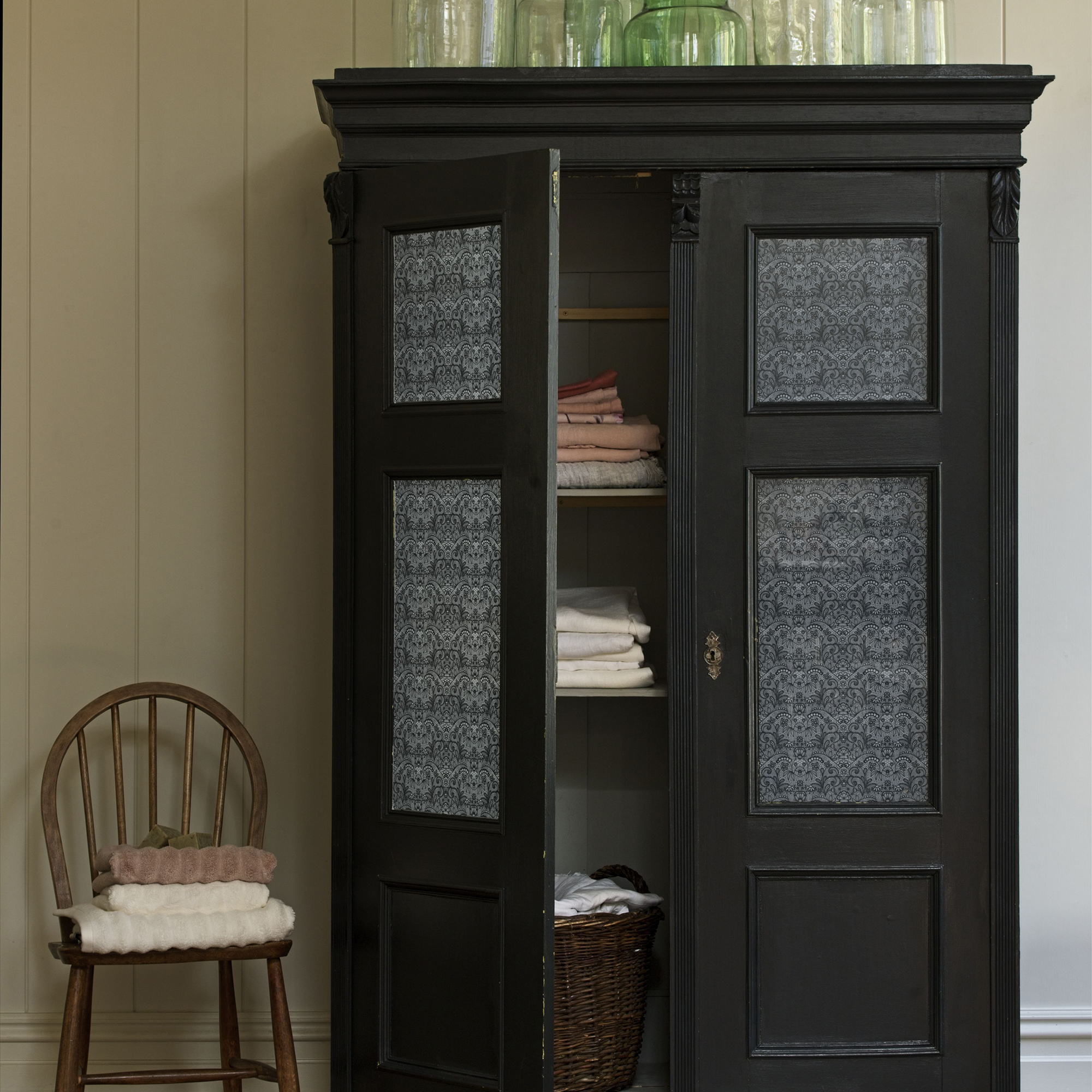
1. Reduce, reuse and rejuvenate
Empty out the cupboard, give it a good dust and clean, checking for any damage that might need addressing. While the area is airing, tackle your pile of linen, making sure the area is completely dry before putting anything back in.
‘Get rid of all the items that you don’t need. Turn old towels into cleaning rags for the garage, cutting worn linens into smaller pieces. If they’re still in good condition, donate them,’ says Lily Cameron, cleaning supervisor at Fantastic Services. ‘Keep your bedding and towels to three sets per bedroom/bathroom. There should also be two sets of sheets, towels, extra pillows, and a blanket for every guest room.’
Get the Ideal Home Newsletter
Sign up to our newsletter for style and decor inspiration, house makeovers, project advice and more.
2. Choose somewhere well ventilated
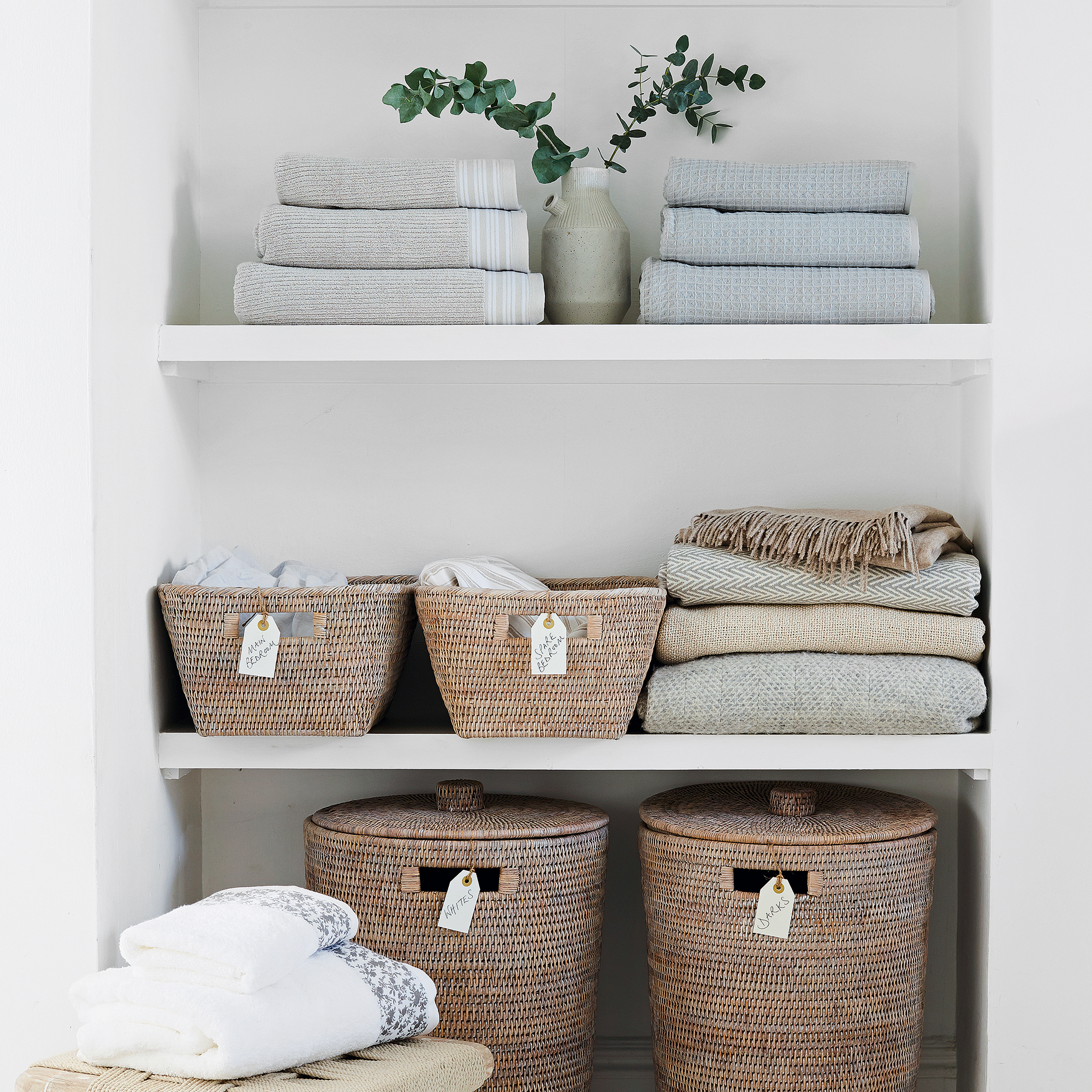
Make sure your storage area is well ventilated to ensure everything stays smelling fresh. If it’s in a cupboard then choose one that has either decorative holes on the doors, or even holes on the sides or back of the cupboard to allow air to circulate.
Don’t be tempted to stuff shelves full – leave enough breathing space to allow the air to flow, and to avoid creasing.
3. Practise your folding skills
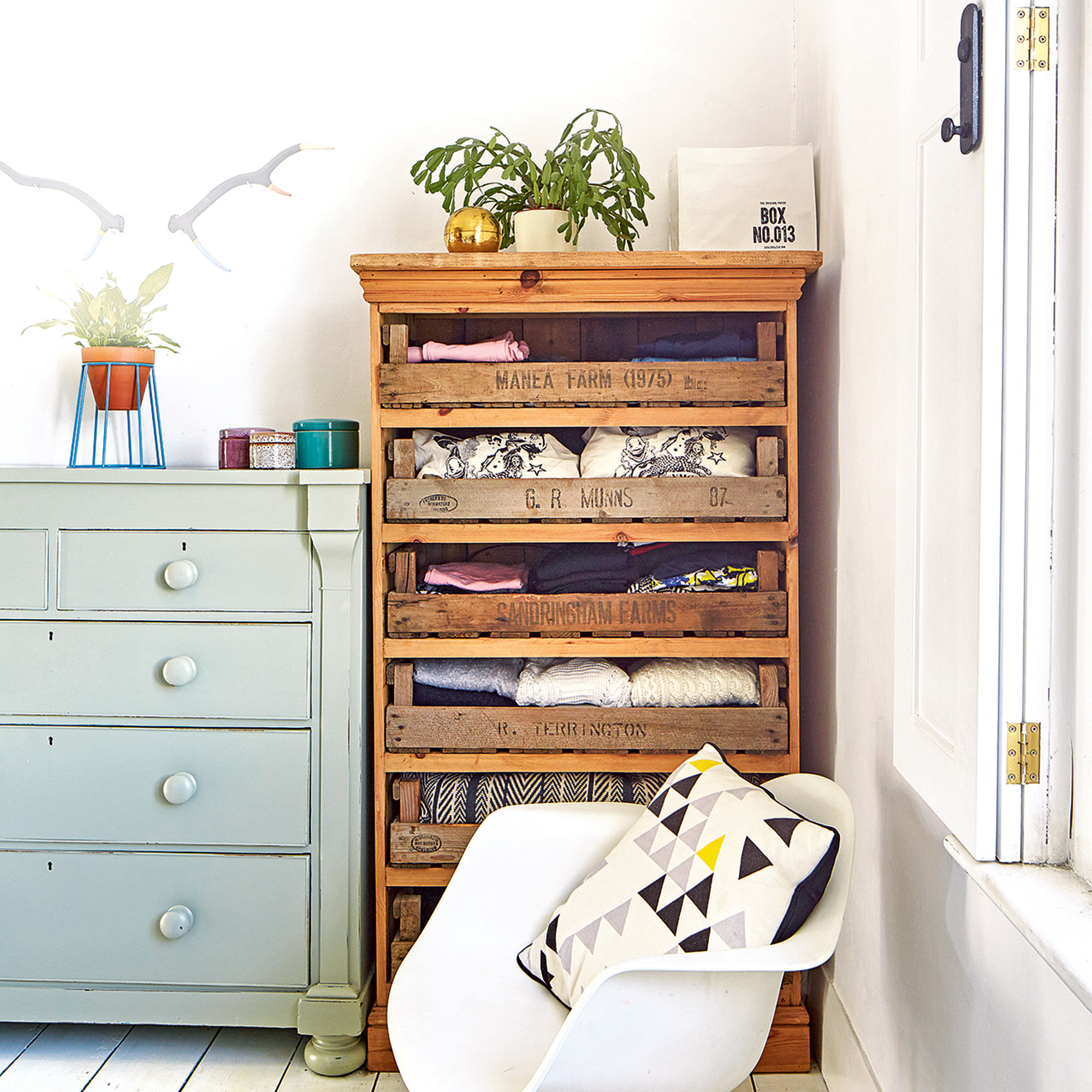
It’s amazing how clever folding techniques can transform storage space, so fold everything first to work out how much space you’ll need. Spend a little time practising your folding skills - get your head around how to fold a fitted sheet and it’ll become a total game-changer when it comes to stacking neat piles!
A really good hack for a quick change over come wash day is to store each of your neatly folded bed linen sets within one of the pillowcases. That way when you come to grab fresh bedding the bottom sheet, duvet cover and pillowcases you need for each bed will already be together.
4. Put your most used items within easy reach
Just as you would when organising a wardrobe or kitchen cabinets, keep your most used items within easy reach when organising a linen cupboard. Place the bed linen and towels that you change every week within your eye line, so you can see it instantly and fetch it without having to over stretch.
‘Put essential weekly and daily used items close to hand with items such as spare room bed linen or beach towels on higher shelves,' agrees Simon Glanville, Managing Director at A Place For Everything.
5. Organise by type
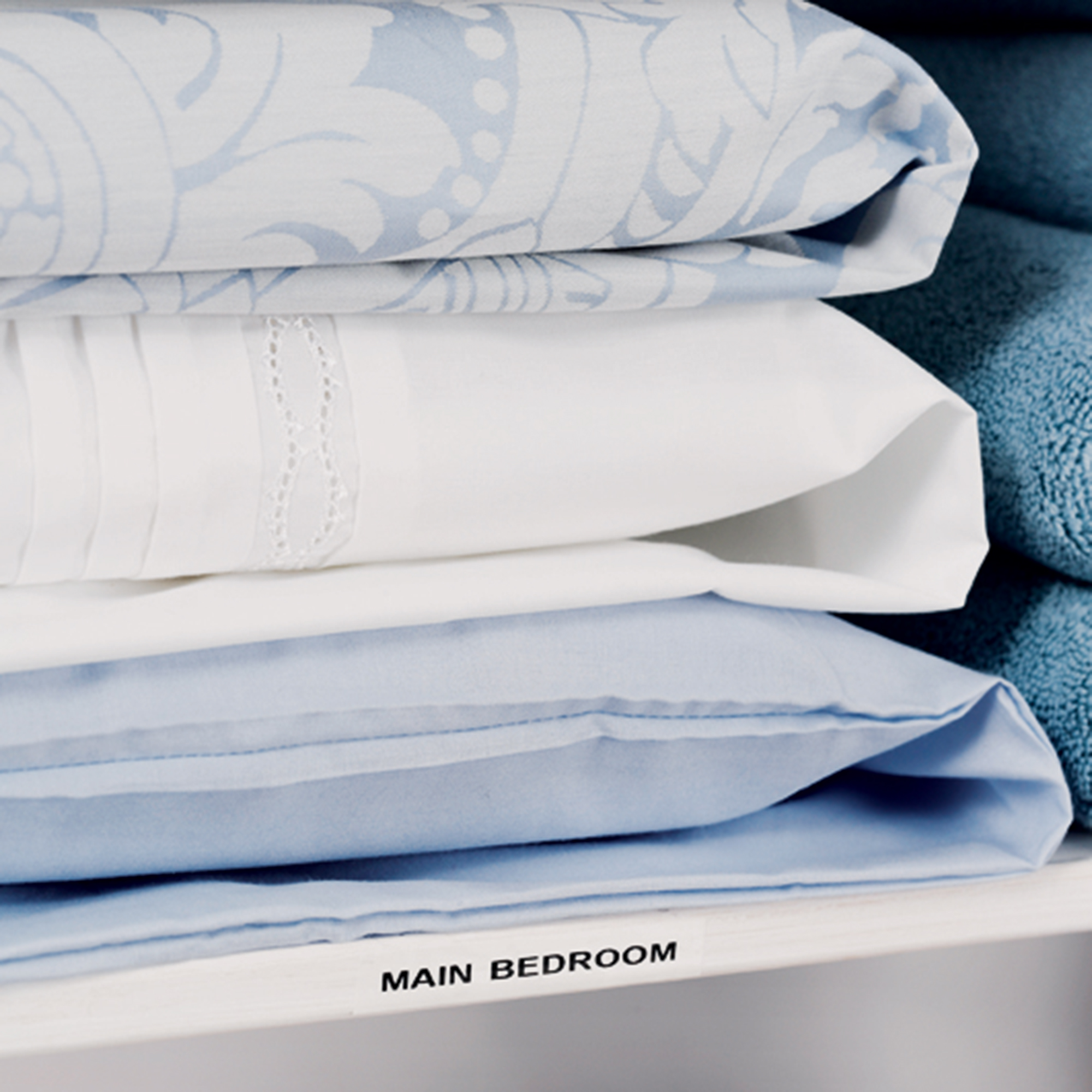
There are a few ways to organise your linens so work out which is best for you, there’s no point trying to stick to a rigid way of organising if it simply doesn’t work for you and your household.
An easy way to arrange items is by type or size, so you could keep all of the single bedding together, and all of the double bedding in a separate pile.
6. Organise by room
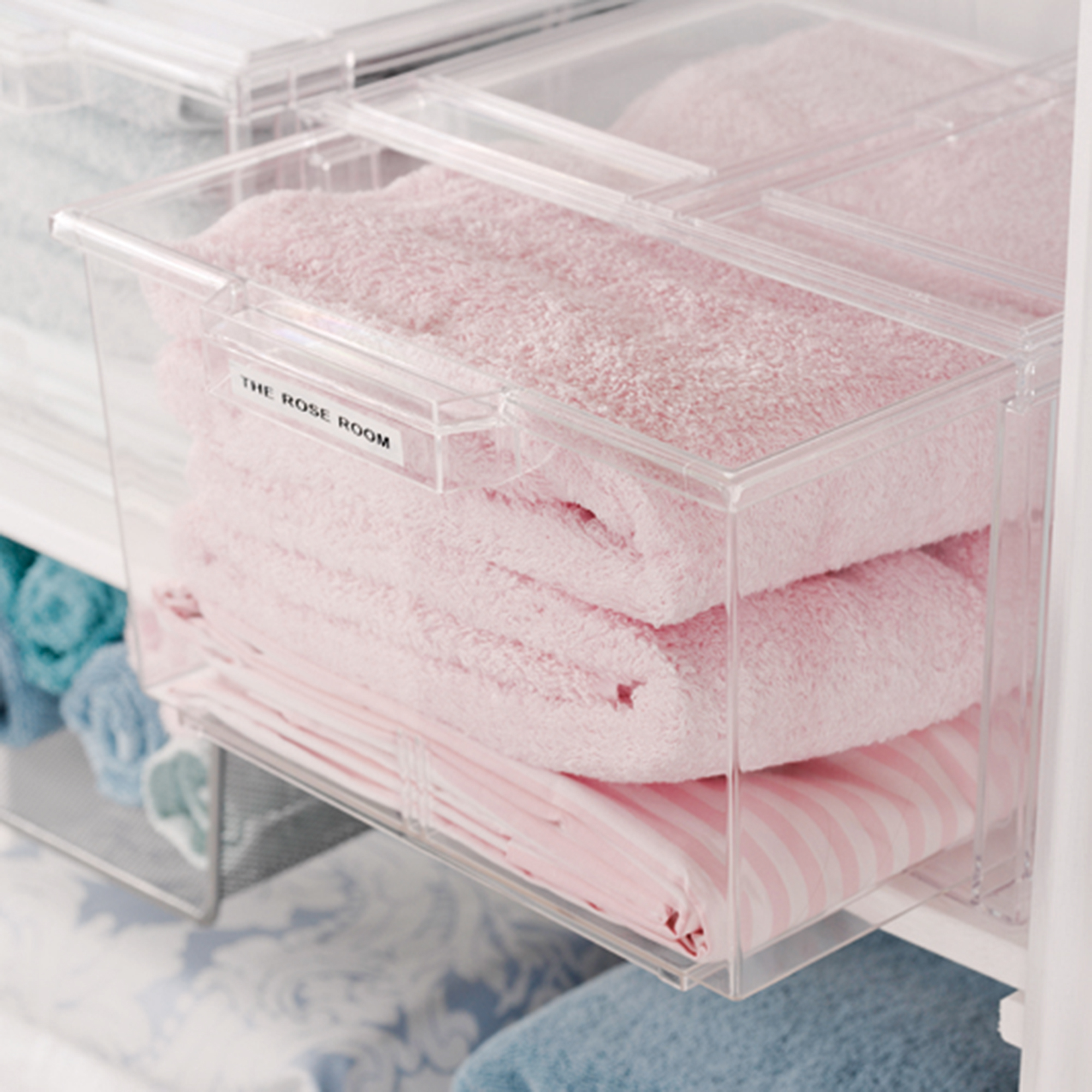
Another organisational system could be to keep linens together by room or family member. So each bedroom or person has all of their bed linen and towels stored together – a great option for households with older children, giving them no excuse to lend a hand when it comes to changing bedding or towels!
You could even go a step further and colour code your linen. Get everyone to choose their own colour for their bedding and towels, making them even easier to locate in a well-stocked linen cupboard.
7. Label everything to avoid confusion
There’s nothing more frustrating than organising a linen cupboard just for everyone else to come in and mess up your hard work. Encourage everyone to put things in the right place by labelling everything.
Simon Glanville agrees: ‘Containerise linen in transparent lidded boxes on shelves to maintain a sense of order and consider labelling for easy identification.’
8. Invest in storage organisers
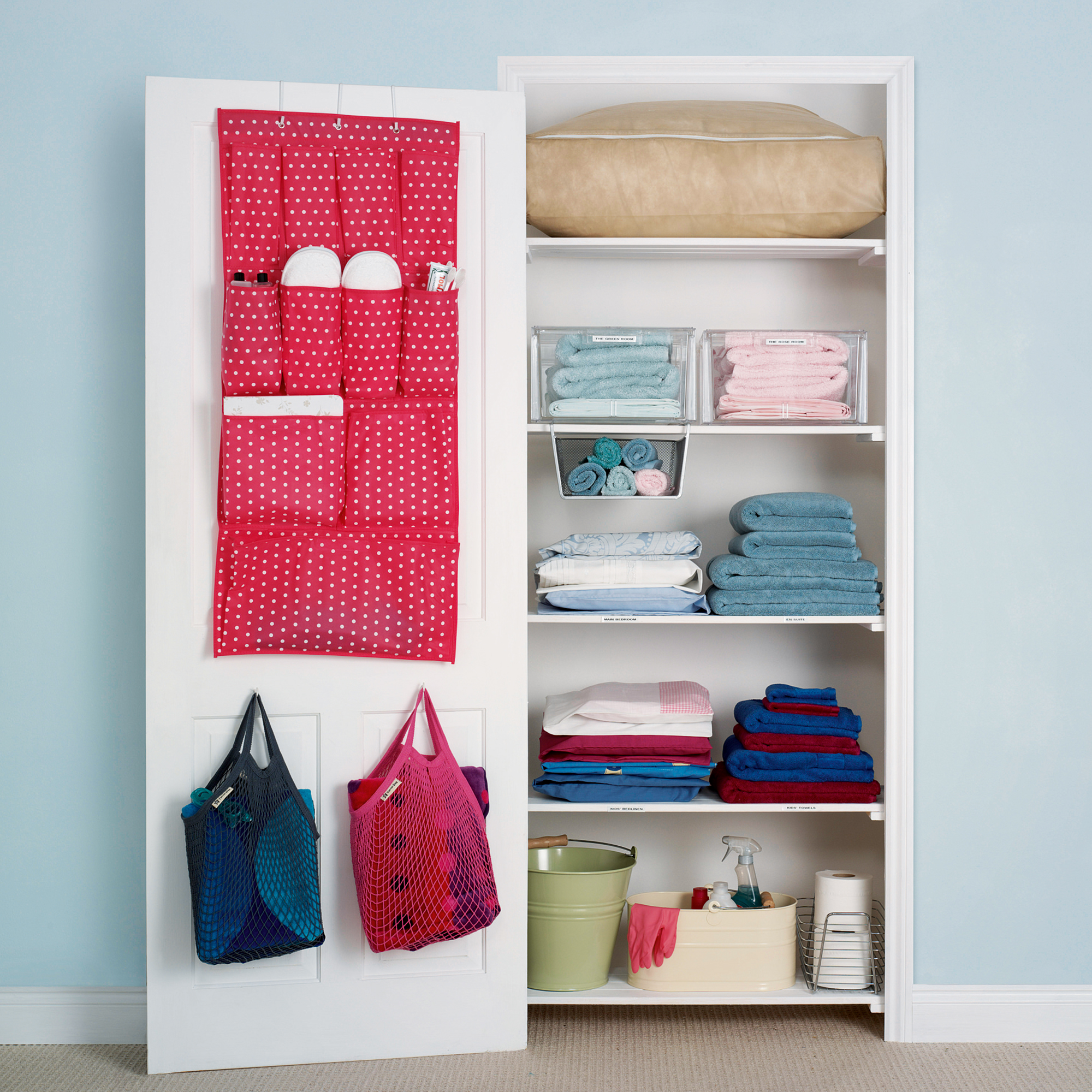
Piles of linen can be difficult to tell apart and can easily tumble over, so look into handy storage buys to help separate items. Baskets are great for linen as well as laundry products, and are easy to grab down from high shelves, and carry to where you need them.
9. Store laundry related items

Try to make space when organising a linen cupboard for laundry supplies such as detergent and fabric softener, fabric refresher sprays, ironing water and stain removers. If you have children in the house then make sure all cleaning products are stored safely out of reach, in a lidded, and if possible lockable box.
Over door storage is a handy option for creating extra space – the ideal home for holding clothes pegs, washing bags for delicates and dryer balls.
10. Keep clothes protected and smelling fresh

Before putting everything back into storage check them over for any damage such as moth holes or mildew, to ensure you don’t have any issues with the space you are using.
Make sure everything is clean before putting it away. Even if something looks clean, if it has been used there might be invisible grease or residue that can attract nasties.
A scented pillow or sachet will keep bed linen smelling fresh, as well as having the additional benefit of protecting your linen – cedar wood for example will help to deter moths from nibbling natural materials.
‘Hanging fresh or dried lavender or rosemary in the linen cupboard will help prevent the cupboard from getting musty and will leave a lovely fragrance. They will also help deter spiders from finding a home in your clean washing,’ advises Heather Nixon, regulatory, NPD and sustainability manager, at green cleaning company Bio-D.
What do you put in a linen cupboard?
What you keep in your linen cupboard can depend on the space you have available. If you simply have a chest of drawers, or a shelf at the top of the wardrobe, then prioritise bed linen and towels, adding spare blankets, throws and beach towels if you have the capacity.
If space is no issue, then consider adding a few extras such as kitchen and table linens, or laundry products – even the iron and ironing board could fit in a full-length cupboard. A laundry basket is a helpful addition as well.
How do you store sheets and towels in a linen cupboard?
Neatly folding bed linen and towels in piles, or in storage baskets, organised by type, or room, is an efficient way of keeping everything crease-free and easy to locate.
Store each bed linen set within its own pillowcase to make for a quick change over and always fold duvet covers inside out for speedy bed making – simply put your hands into the corners of the cover, grab the top two corners of the duvet, then shake down.
When it comes to towels, folding them isn’t the only option, especially in tricky areas like airing cupboards. ‘If space is tight due to awkwardly positioned boilers or pipework, roll rather than fold towels,’ suggests Simon Glanville. This is great advice for storing towels in baskets as well, making them easier to see.
What can I use if I don’t have a linen cupboard?
An under bed storage box is a great space-saving option, just make sure it’s made of a breathable material and that the area is clean and dry. Woven baskets are fantastic for storing rolled towels in the bathroom, or neatly folded sheets, and can be popped on a shelf taking up little space. Modular shelving is a good option if you do have the room, and can be easily modified if you need to reconfigure the space.
Laura Higgins is a freelance journalist who has had a career within the magazine industry for twenty years. Laura worked for over a decade on Your Home magazine where she was Lifestyle Editor, writing about everything from interiors and decorating to household advice, kitchen appliances and recipes. Since launching her freelance career in 2020 she has written for a variety of titles and brands, including Future titles Style at Home and Ideal Home. As well as writing about homes, Laura also works as a food stylist and has styled photoshoots for several well-known brands.
-
 Will a conservatory add value to your home and how can you maximise it?
Will a conservatory add value to your home and how can you maximise it?This is what the pros say
By Amy Reeves
-
 I’ve been looking for a new signature scent for my home and The White Company's new fragrance is the exact summer holiday smell I needed
I’ve been looking for a new signature scent for my home and The White Company's new fragrance is the exact summer holiday smell I neededSantorini smells fresh, summery and sophisticated
By Kezia Reynolds
-
 How to remove algae from garden walls in five steps – and the cleaning product experts rave about for tackling it fast
How to remove algae from garden walls in five steps – and the cleaning product experts rave about for tackling it fastExperts share their top tips for getting garden walls algae-free
By Katie Sims